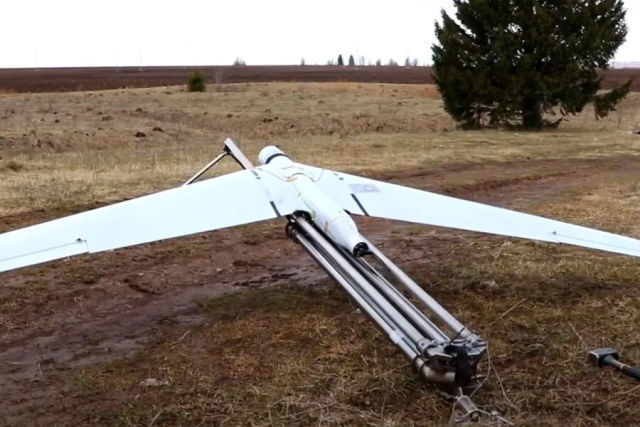General Lyutykh revealed the secret of Russian UAVs used in Ukraine
During a special operation in Ukraine, the Russian army is actively using Zala unmanned aerial vehicles (UAVs). In particular, they are used to adjust the work of artillery calculations. "Newspaper.Ru" together with military experts, I figured out what these drones are capable of.
"Artillery units of the Russian army use the Zala drone to perform reconnaissance tasks and improve the accuracy of fire. The drone allows you to detect and destroy a battery of 155-mm American M777 howitzers in Ukraine," the American weapons portal Army Recognition notes.
The authors of Army Recognition claim that the Russian Armed Forces allegedly "changed tactics."
"Previously, mainly aviation intelligence data was used for guidance, but Zala drones help to more accurately, and most importantly, more quickly calculate the coordinates of the enemy. This significantly increases the effectiveness of artillery and simplifies the targeting of AFU positions," adds Army Recognition.
Zala is not one, but a whole series of unmanned aerial vehicles. Unmanned mini-planes of the Zala 421-04, Zala 421-08 and 421-16 projects are capable of operating within a radius of 15 to 40 km, being in the air for up to 2.5 hours, and the mass of their target load is 1.5 kg.
The Zala 421-20 aircraft-type drones are larger. Their range is up to 120 km, flight time is 11 hours, target load weight is up to 50 kg. They can combine various systems on board, including air navigation systems, automatic data decryption and laser targeting.
Finally, the Zala 421-02 and Zala 421-02X helicopter-type drones can operate for 6 hours at a distance of 50 km and carry a load of 50 kg.
"Initially, these drones were intended for use by the Border Service of the FSB of Russia and the Ministry of Emergency Situations of Russia. The Ministry of Defense became interested in these UAVs because of their ability to conduct reconnaissance at a considerable distance and "hover" in the air. At the same time, send a clear signal with the coordinates of the targets. Now such drones are in service with motorized rifle and amphibious units that take part in a special operation," he told the newspaper.Ru" member of the Board of Military Experts Sergey Belousov.
In turn, a military expert, retired Air Force Major General Igor Lyutykh noted such a feature of Zala as a "well-encrypted communication channel."
"Firstly, these drones are very maneuverable. Secondly, they have a closed and well-encrypted communication channel. This makes the drone virtually invisible to the APU's radar facilities. Their detection and, accordingly, destruction is extremely difficult. The Zala drone is almost invulnerable to Ukrainian electronic warfare. They don't see him. Of course, it can be shot down when it is in the line of sight, but the APU does not succeed in suppressing it by means of electronic warfare," says Lyutykh.
The general added that another feature of the Zala family of drones is the use of two types of guidance systems simultaneously: it can be controlled both via a radio communication channel and operate completely autonomously.
"This additionally confuses the APU. The drone is controlled manually at one point in time, and at another it completely "eliminates" communication with the operator. Thus, even if at one moment the enemy detects it by signal, then at the second - loses. And so I have to look again. And so on indefinitely," the general explained.
Previously, Zala drones were used in Syria. In April 2021, the relevant footage was published by the Russian Ministry of Defense.
"Now there are companies of reconnaissance drones in every amphibious unit.
They train real professionals who are able to control complex air systems designed to conduct reconnaissance, correct artillery fire," he told the newspaper.Ru" former commander of the Airborne Forces, Colonel-General Georgy Shpak.
Victor Sokirko

